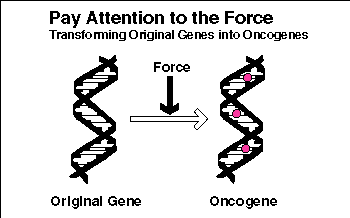 |
 |
|
|
|
|
|
 |
II. Introduction of
Stomach Cancer Theory |
|
|
|
|
|
When an organ causes cancer, it must need a force that transforms a normal gene into an oncogene. Although the majority of medical researchers focus on examining the transformation of a normal gene into an oncogene, they seem not to find out the fundamental cause of cancer. Why? This must be because an oncogene is not the fundamental cause of cancer. If so, what mechanism controls cancer? To solve this question, we will pay attention to a force transforming a normal gene into an oncogene, and theoretically analyze gastric cancers through two steps as follows. At the first step, we will pick up important phenomena, which are related to carcinogenesis, not only in a human body but also in nature, then analyze theoretically each of them. At the next step, by using the indications obtained in the preceding step, we will try to analyze theoretically how the stomach causes three types of gastric cancers: adenocarcinoma arising from the mucosal epithelium, signet ring cell adenocarcinoma arising from the lamina propria mucosae, and leiomyosarcoma arising from the lamina muscularis mucosae. |
|
|
|
|
Fig2:
Force that transforms original genes into oncogenes
|
|

|
|
|
|
* Although we tend to regard cancer as one of the abnormal phenomena caused in a human body, we should check this point again. In fact, cancer often leads a human body to die. However, cancer can theoretically be considered to occur as a normal phenomenon in a human body; thus, we should begin by finding out the force that transforms original genes into oncogenes. |
|
|
|
Points:
A cancer cell shows specific features different from those of a normal cell, but we must not try to change only them. A cancer cell must have the reason for the existence, and show its special characteristics. Thus, we should find out the reason why a human body requires cancer. |
|
|
|